May 30 2016
Cleaning up and rate ladders
I normally prefer a rest day after races, but Tuesday is a travel day, so I decided to turn it around.
After work I headed to the rowing club. Everybody was already busy offloading boats from the trailers, giving them a wash and putting riggers on. It took me an hour to get the single and double ready. I am not sure if these things can be done faster. Personally I want to be precise, make sure that each bolt is tightened, all the covers are folded and put away, and also the washing is something I take time to do.
At 6pm I was ready and went for a row. A steady state row was on the menu, and I always like to spice these up by doing rate ladders. The rate ladders are also a good way to work on technique, in my mind. At 18spm, there is time enough to focus on each attention point. After a few minutes, you switch to 20spm. Just slightly faster so transferring the good stroke is not so difficult. After a few minutes, on to 22spm, then on to 24spm.
There was some chop on the lake. Nothing that would make it unrowable, but I fancied a change so I rowed up to the castle and back.
The water was brown. There has been a big thunderstorm two nights ago. Apparently the muddy water has now reached our lake.
http://rowsandall.com/rowers/workout/225
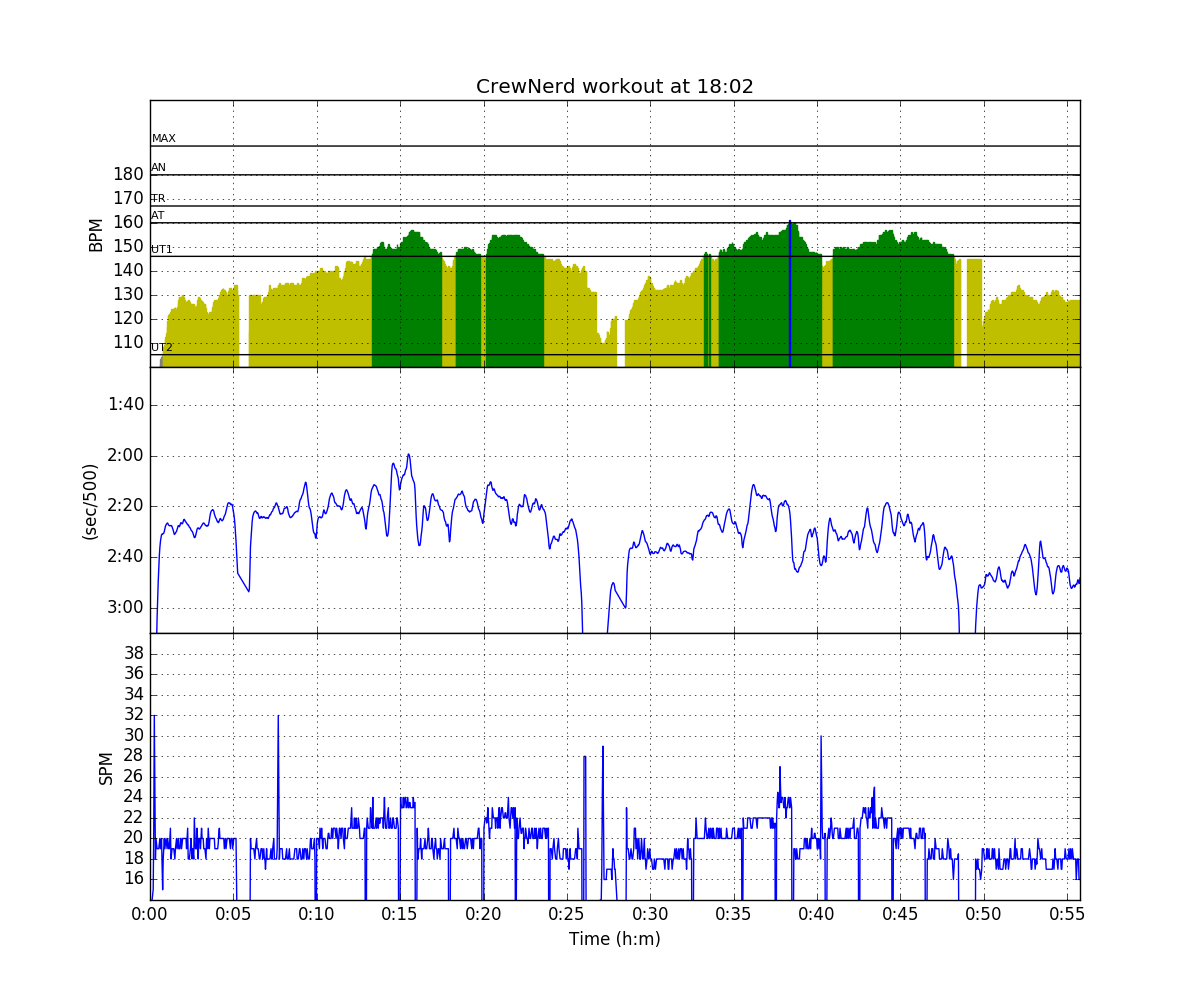
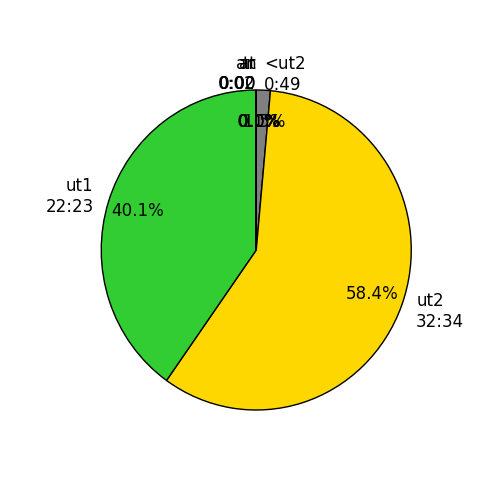
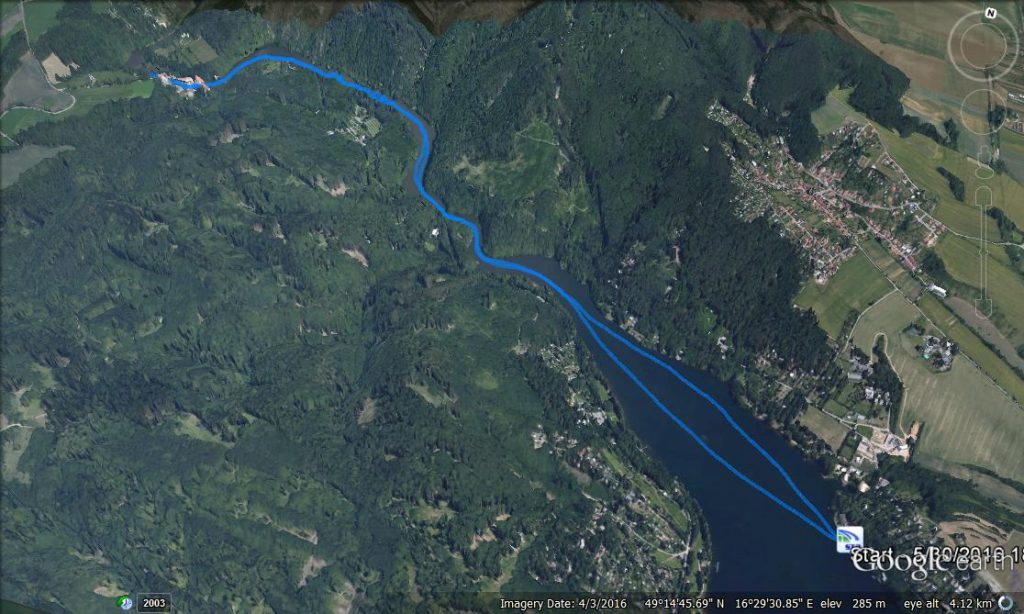
Tomorrow: Travel
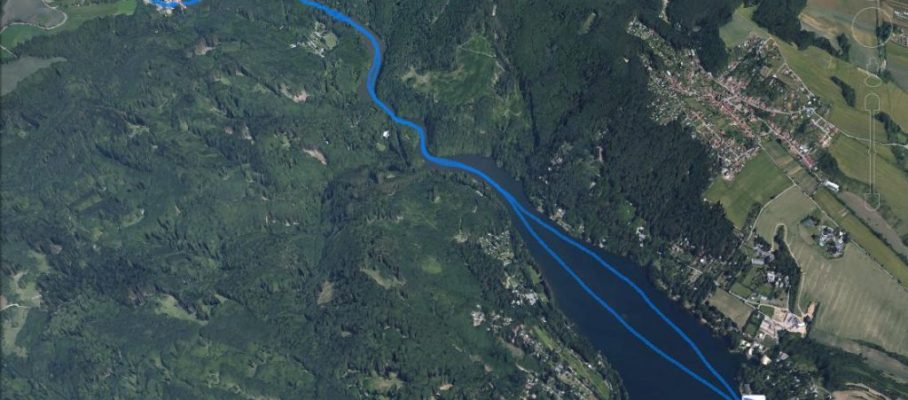
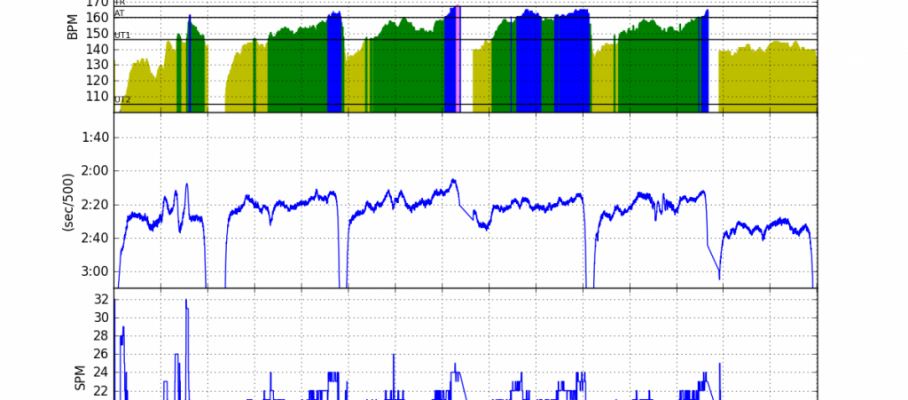
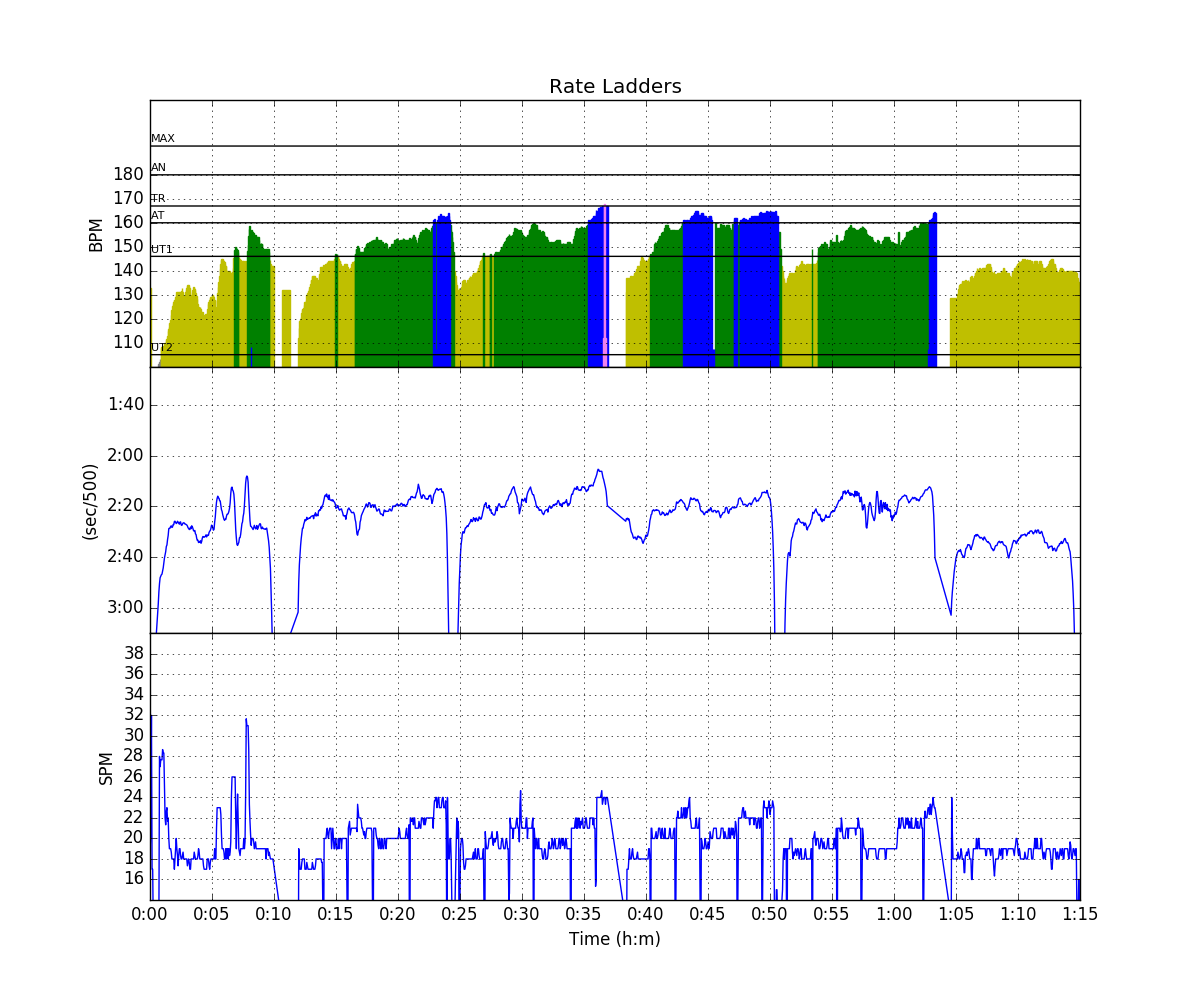
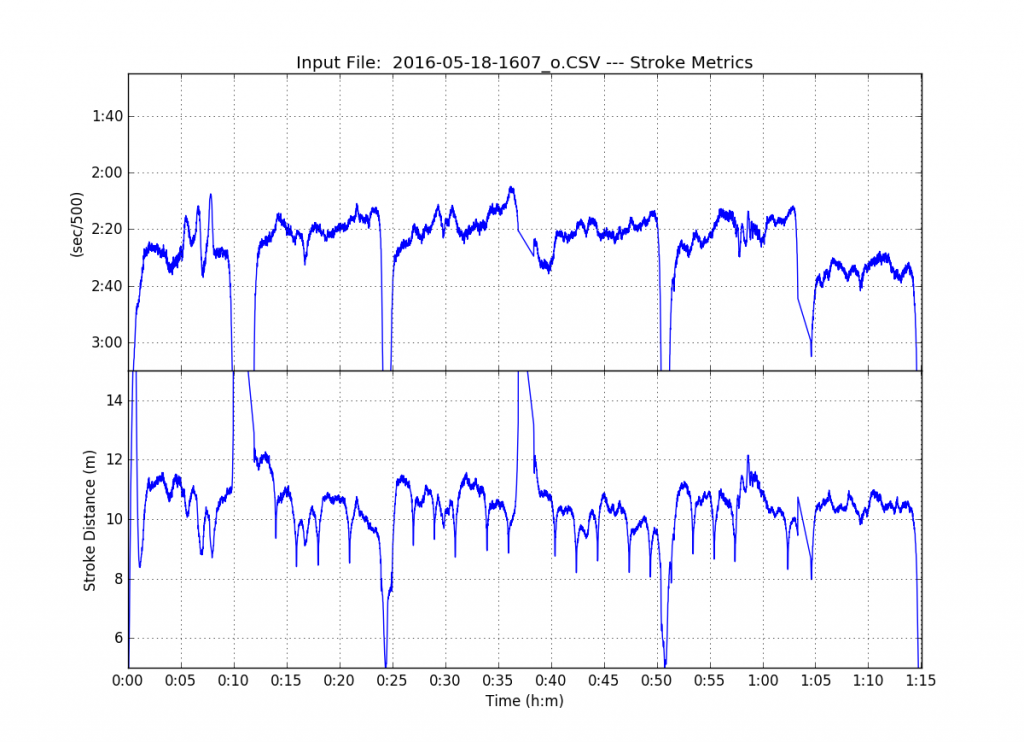
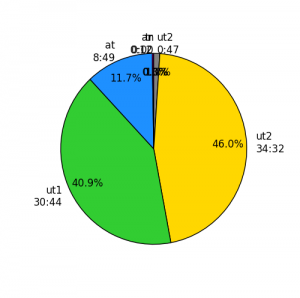
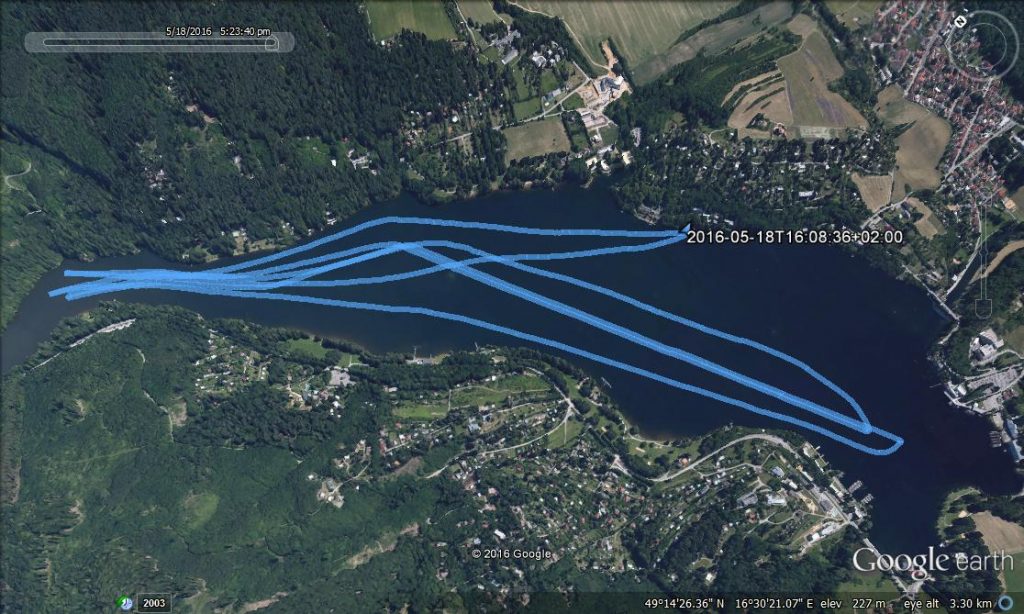
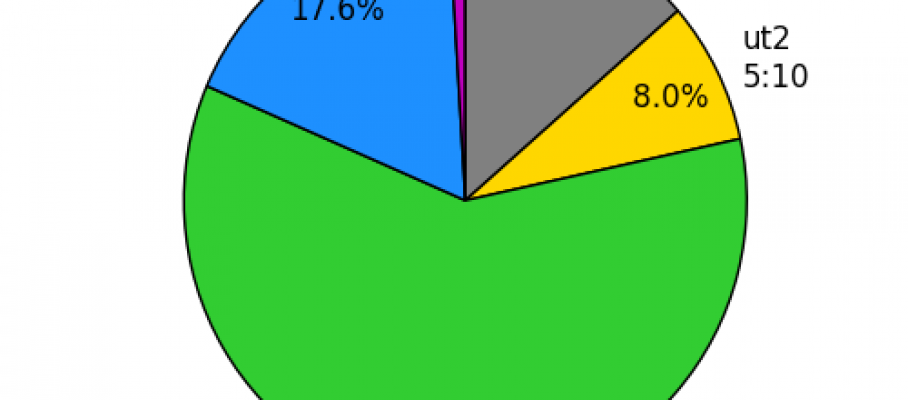
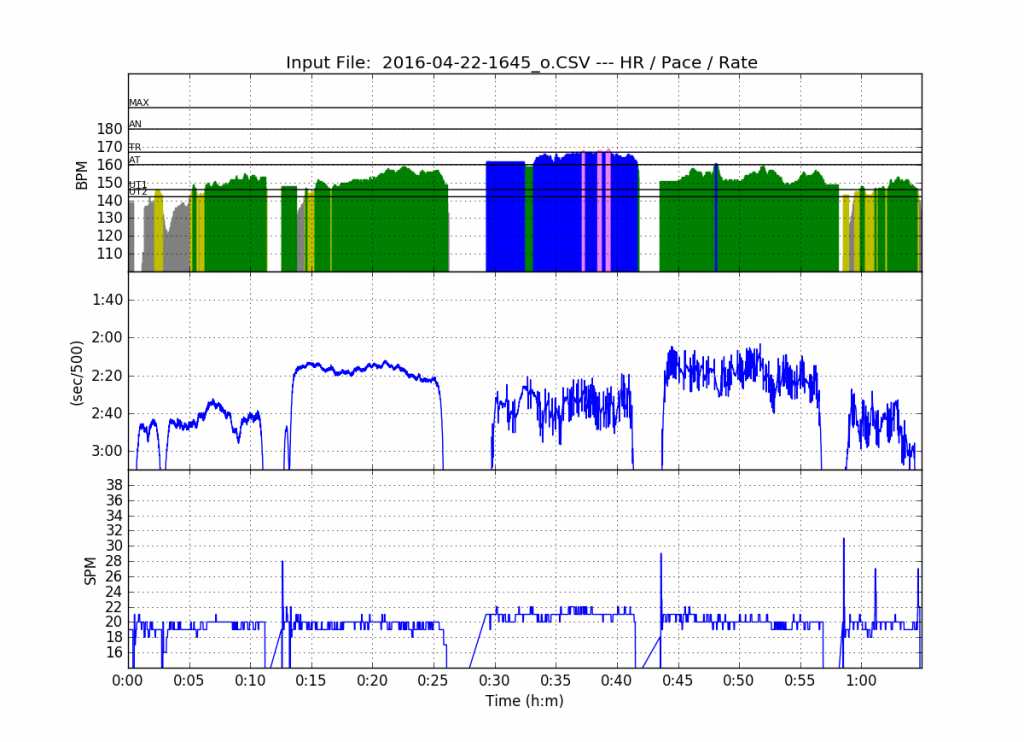
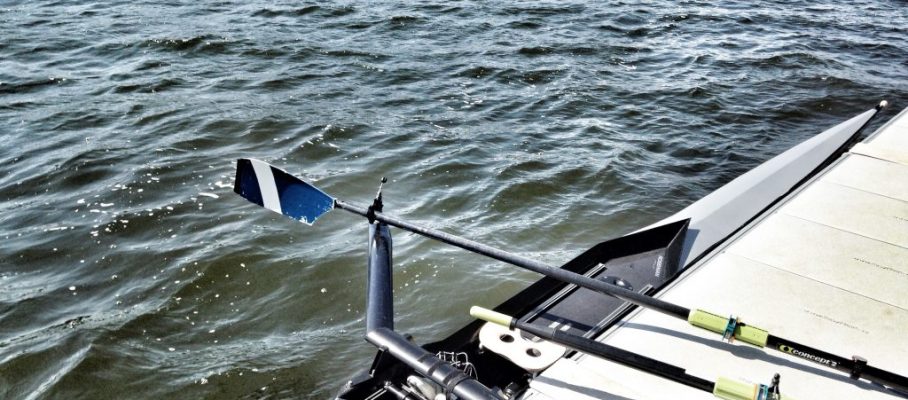
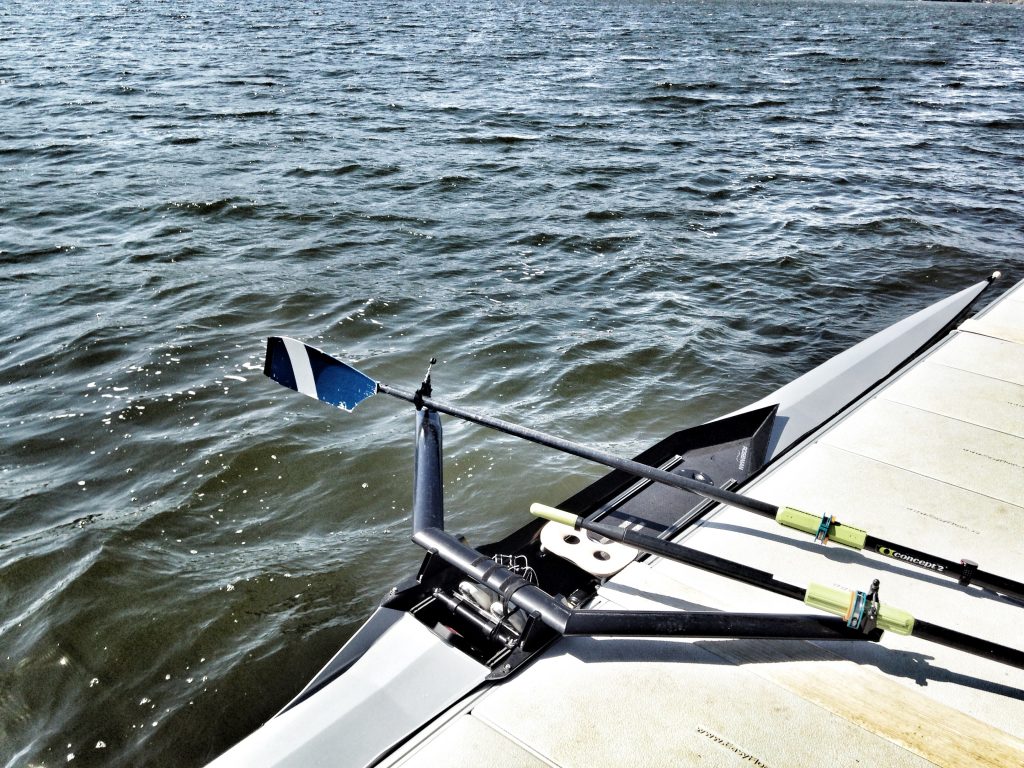
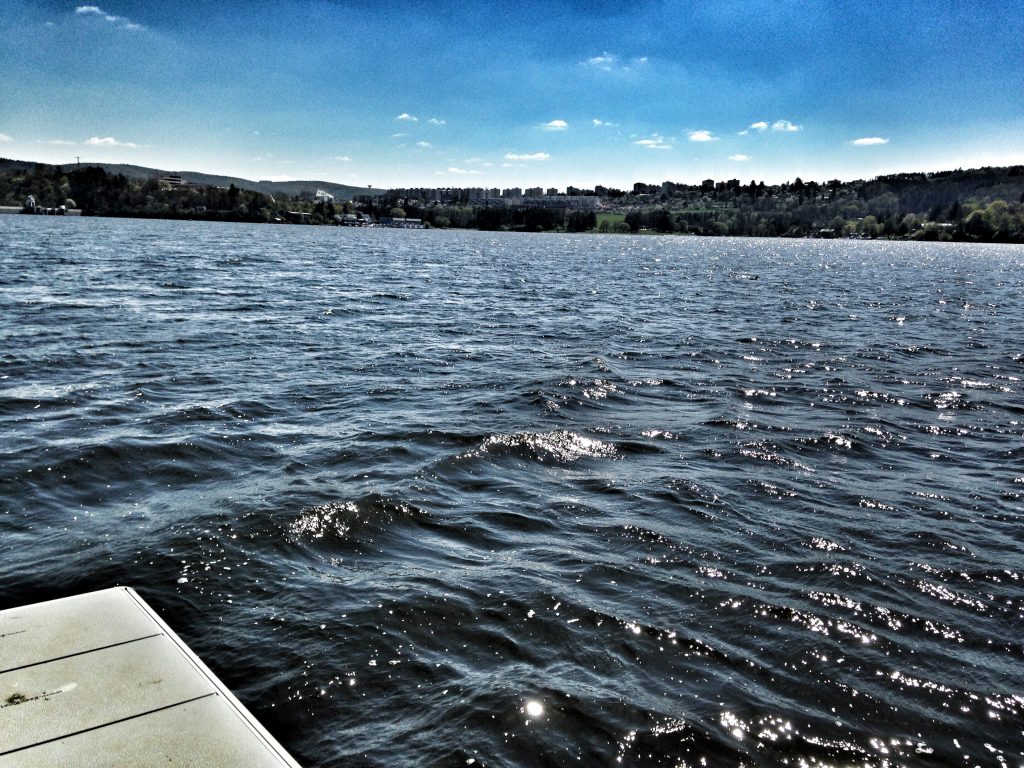
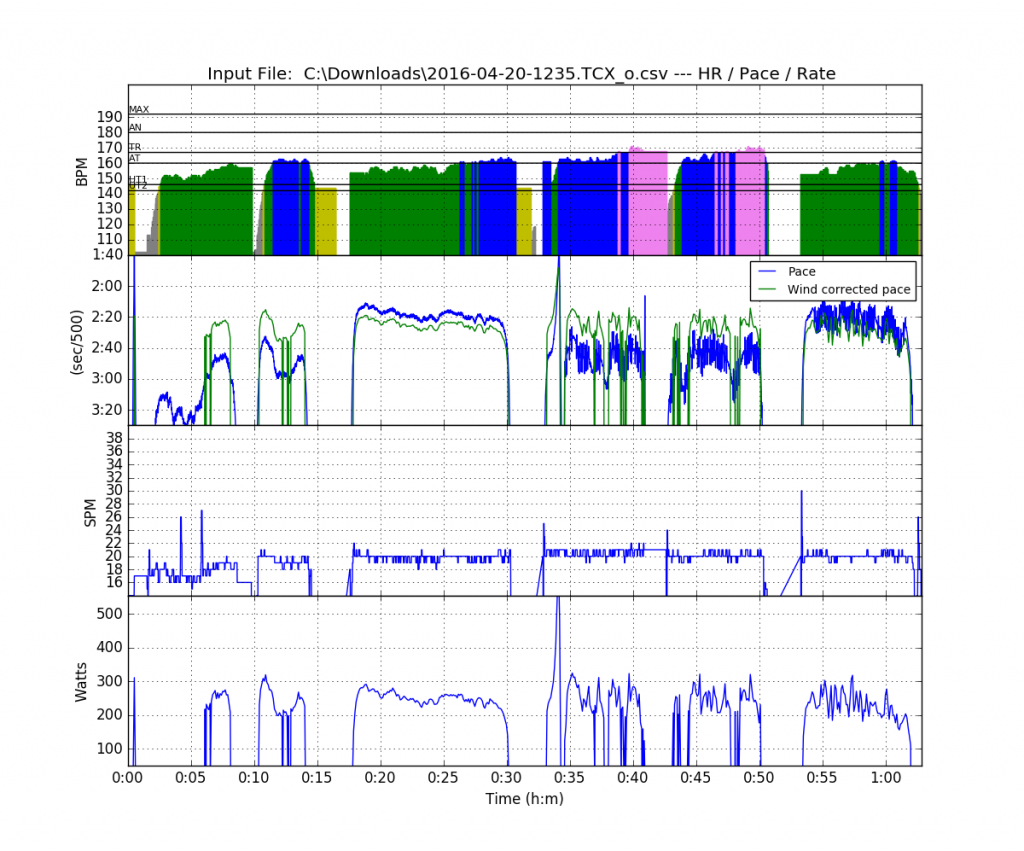
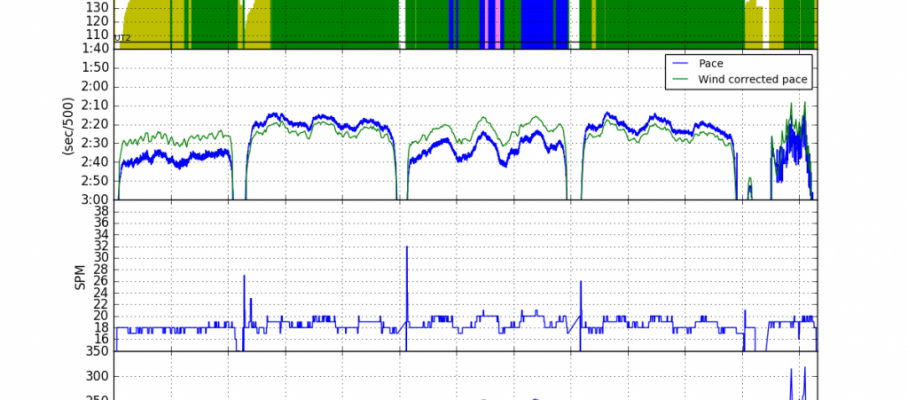

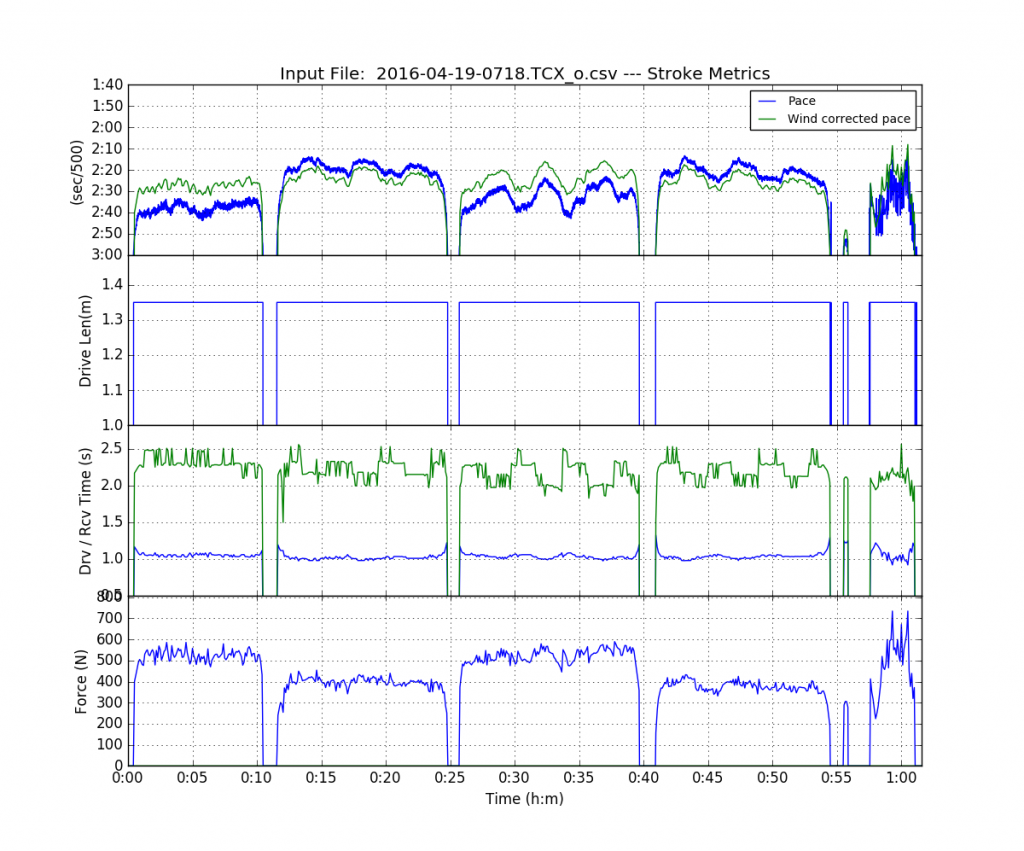
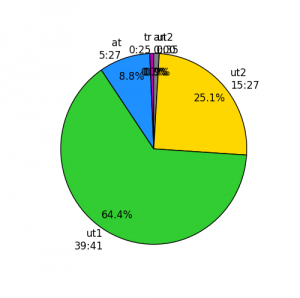
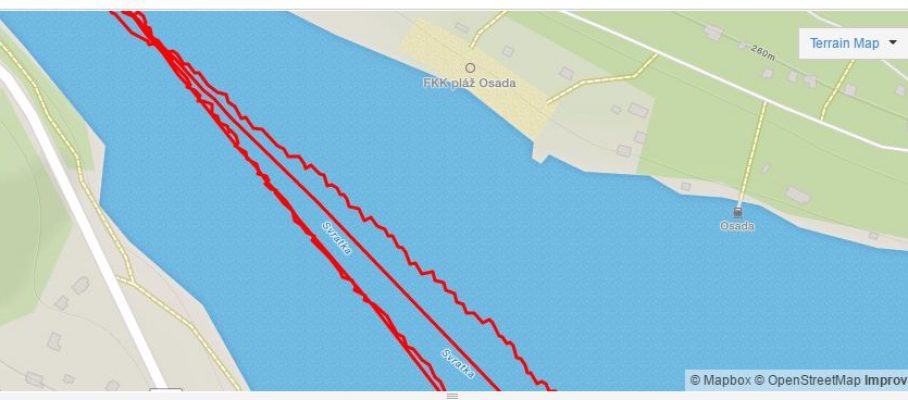
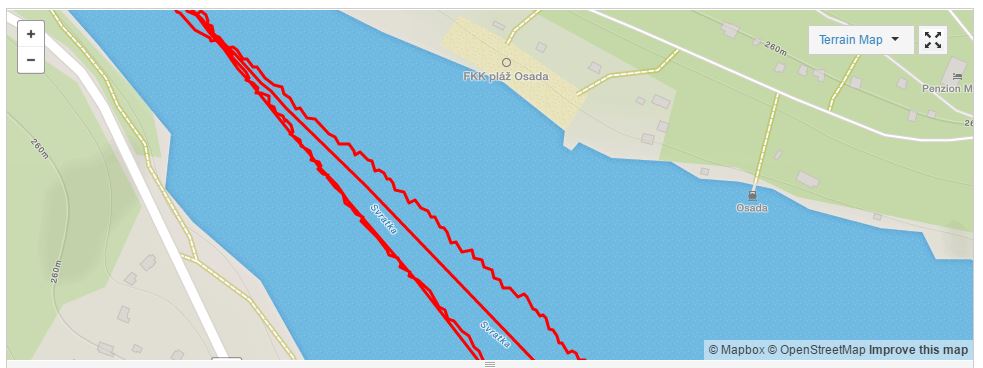
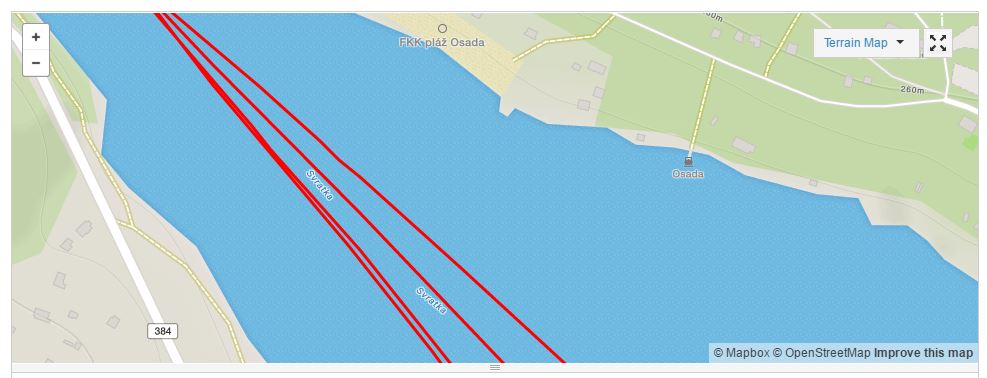


Jun 3 2016
Technique & Steady State
Worked from home today. By 4pm we all headed to the lake. In the morning it was damp and humid, gray weather but after lunch it cleared up.
With the races tomorrow, I was conscious not to hit any higher heart rates. So I just rowed and rowed. And rowed. And rowed. Twenty strokes per minute in the single:
Click here for a nice interactive plot of my row
Around 2:20 pace in the light tailwind, 2:30 pace in headwind.
I have been playing a bit with my rowing physics model today. Trying to get the calculation of corresponding ergometer power right. I am not there yet. Here is a plot of what I am trying to achieve: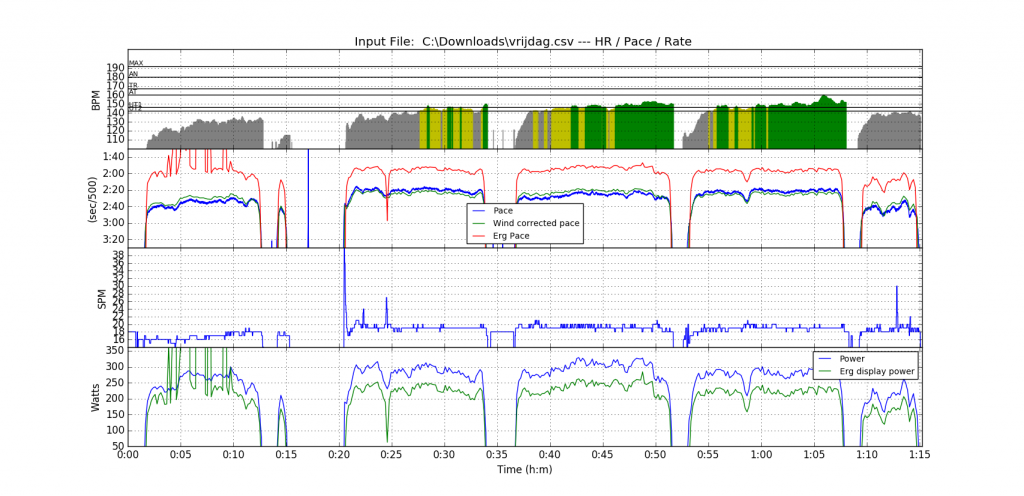
Looking at my heart rate and how the row “feels”, I would say I was rowing at a pace that on the static ergometer is somewhere around 2:00 – 2:02. My calculations give me something between 1:55 and 2:00. I don’t know about you, but for me the difference between 2:00 and 1:55 is huge. And rowing at 1:58 on the erg, I definitely achieve higher heart rates. Being an experimental physicist by education, I have no ego problems admitting that I am in the stage where theory and experiment don’t match.
(The other explanation would be that I am a superior rower and lousy on the erg.)
Bill Atkinson has, very timely, started the discussion about internal energy dissipation in rowers on rec.sport.rowing. Also today, I received an email from Marinus van Holst mentioning that in anticipation of the Olympics, the Nederlandse Natuurkundige Vereniging (Dutch Physics Society) has devoted the June issue of its Tijdschrift voor de Natuurkunde (Dutch Journal of Physics) to Physics and Sports. Of course, being Dutch, they focus on swimming and speed skating, but still this was interesting enough to order a copy. (I am a member of this society but living abroad I don’t get the journal.)
I am very excited about this. Ultimately, when I have sorted the physics and found something that I understand and is correlating well between my humble OTW and OTE results, I want to offer the erg to water power calculations to the members who register on rowsandall.com.
Racing tomorrow. It’s not exactly Oxford vs Cambridge, but it’s the fourth year in a row of Piestany vs Brno vs Neratovice Masters Eights on the Moldau (Vltava) river in Prague. Sixteen Masters rowers will be disappointed. Eight Masters rowers will feel they own the universe. 🙂
By sanderroosendaal • Uncategorized • 0 • Tags: lake, rowing, rowing physics, single, steady state, training